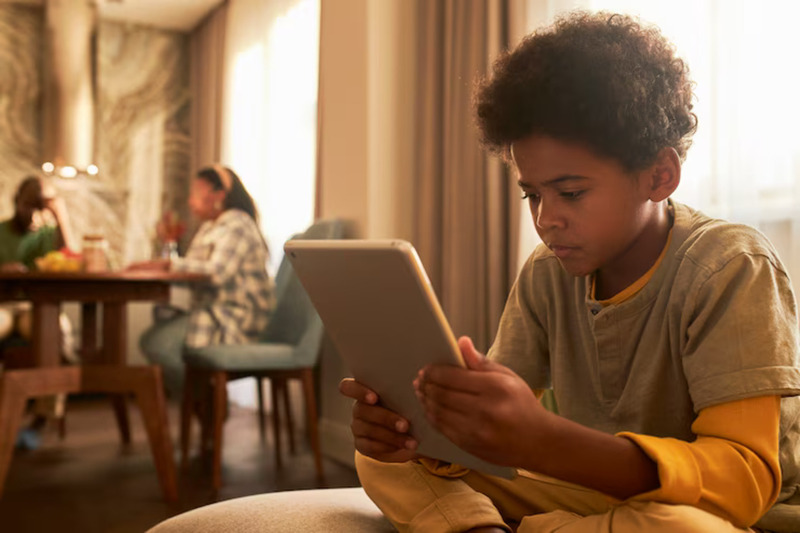When things go wrong online, it is 24/7, it cuts deeper, lasts longer, and follows them home. Whether your child is being bullied, or you’ve just found out they’re the one doing the bullying, it requires a new kind of parenting: calm, connected, and cyber-literate.
Cyberbullying is not just mean comments or name-calling online anymore. It’s evolved into a spectrum of harm including:
- Doxxing: Publishing someone’s private information online
- Deepfake manipulation: AI-generated videos or images used to humiliate
- Trolling mobs: Group pile-ons, often anonymous
- Exclusionary tactics: “Ghost group chats,” silent treatment, or mass blocking
- Revenge posting: Leaking screenshots or private photos for retaliation
- Gamified humiliation: Using likes, comments, or followers as weapons
- Digital stalking: Monitoring every online move and turning others against the target
It’s always about power, but now it’s algorithmically amplified. And it can happen anywhere: Instagram, Discord, school LMS systems, or anonymous apps.
Schools have a clear duty of care to protect students from harm, including cyberbullying, when it’s linked to school life, even if it happens outside school hours. While schools can’t be in a child’s bedroom monitoring late-night device use or enforcing boundaries set (or not set) at home, they can and must act during school hours. This includes educating students about digital safety, supporting mediation between peers, monitoring mental health and wellbeing, and responding swiftly when online conflict spills into classrooms. The duty isn’t to control every online interaction, it’s to recognise risk, intervene early, and work with families to keep students safe, both emotionally and socially.
Building self-esteem and self-worth is critical in protecting young people from the impacts of online harm because kids who know their value offline are less likely to seek it in likes, comments, or toxic group chats. The most effective way to do this is by helping them discover who they are beyond the screen. Sport teaches teamwork, discipline, and physical confidence. Art offers self-expression and a way to process big emotions. Music builds identity, focus, and joy. Drama, coding, volunteering, outdoor adventure, anything that helps them achieve, belong, or create something real. These activities not only build skills, but they also build protective layers around a child’s self-worth. The goal isn’t to keep them away from tech, it’s to make sure their self-esteem isn’t built on it.
Start by anchoring yourself. When your child or a student is hurt, your instinct might be to panic or problem-solve but what they really need first is your calm presence. Sit with them. Be curious, not confrontational. You might ask:
“Is something online making life feel heavier right now? “Has anything happened that made you feel left out or unsafe? “If someone else were going through what you are, what do you think they’d need most?”
Once the conversation opens, gently begin documenting. Take screenshots, record messages, and save timelines before platforms auto-delete or content disappears. Don’t share it around or dramatise it. Keep it secure and factual.
Support the child in using platform tools to block, mute, restrict or report abuse. These actions are not about retreat, they’re about control. Encourage them to screenshot the reporting for evidence.
If the harm has crossed into school life, directly or indirectly, notify the school, their teacher, the wellbeing lead, the online safety coach or the digital safety officer. Many schools have Ctrl+Shft’s Digital Ethics and Accountability Pathway program for intervention, including restorative conferencing.
And most importantly: don’t just take the phone away. It sends the message that their honesty comes with punishment. Instead, co-design a recovery plan with them. This might include safe offline spaces, trusted peers or staff they can check in with, reduced digital exposure, and, where needed, professional counselling.
Watch carefully. Ongoing distress, sudden silence, sleep issues, or unexpected outbursts could be signs of trauma. Early intervention matters. You’re not overreacting by reaching out for help. You’re protecting their (and your) mental fitness.
What If Your Child Has Caused Harm Online?
It’s confronting but it doesn’t make your child a bad person. It makes them human. Cyberbullying is often a symptom not the root: fear, status anxiety, peer pressure, emotional overwhelm, or unresolved pain.
Start by regulating yourself. Then calmly ask questions that invite honesty, not defensiveness:
“What was really going on when you posted that?”“What were you hoping would happen?”“If the roles were reversed, what would you want to feel safe again?”
Avoid labels like “bully.” Focus on behaviour and growth. This isn’t about punishment. It’s about repair. Use this as a moment to teach digital empathy, accountability, and maturity.
Support children to take ownership:
- Reflect on the impact, not just the intention.
- Offer a genuine apology (not performative).
- Participate in a restorative process if one is available guided, respectful, safe.
- Make amends in ways that matter: kindness, inclusion, speaking up next time.
Explore what’s underneath the behaviour. Are they being bullied themselves? Feeling invisible or pressured to belong? Lacking healthy outlets for stress or identity development? This isn’t just a tech issue, it’s a wellbeing issue.
- Teach Digital Emotional Literacy: Help your child name what they’re feeling, and recognise what others might be feeling, too.
- Build an Agreement, Not a Rulebook: Collaborate on device boundaries, online tone, and what to do when things go wrong.
- Use Tech That Teaches Empathy: VR experiences, storytelling apps, and interactive learning can humanise the screen.
- Mentor, Don’t Monitor: You don’t need to stalk their accounts. You just need to be close enough that they come to you first.
- Know When to Escalate: If someone is at risk of harm through threats, coercion, image-sharing, or stalking contact your school and the eSafety Commissioner. www.esafety.gov.au
- If safety is in danger, call the police.
If you would like to book our team to speak at your school or would like more information on our Digital Ethics Program click here







